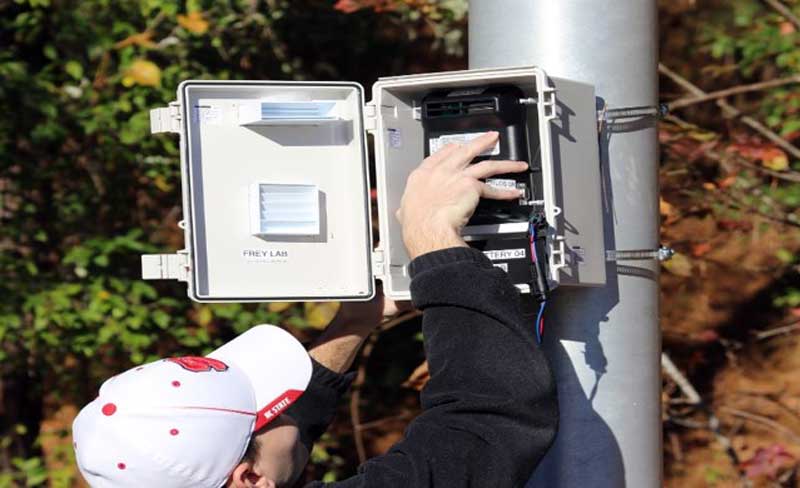In 2015, over 37 million people attended 864 NCAA Division I college football games featuring 127 teams. “Tailgating” is as much a part of going to a game as the game itself. Tailgating occurs in the stadium parking lot and typically centers around a vehicle and a grill, and sometimes entails the use of gasoline-powered electric generators. This scenario sets the stage for close contact between people and air pollution emitted from vehicle engines, generator engines, and grills.
Drs. Kyle Bunds and Jonathan Casper of the Department of Parks, Recreation, and Tourism, and Dr. H. Christopher Frey of the Department of Civil, Construction, and Environmental Engineering, teamed to measure, the first time, actual human exposure to air pollution from tailgating. This team collected data at five Wolfpack home games using five monitors situated at fixed locations around the stadium and one backpack of portable instruments that was carried throughout the parking lots and stadium before, during, and after each game.
Perhaps not surprisingly, the highest exposures and worse air quality was associated with charcoal grills and older generators. Exposures were also high during times when vehicles were entering and exiting the parking lot. Exposures vary depending on wind direction and location within the stadium parking lots. The results of this study will enable development of guidance and suggested best practices for how to have fun at the games while reducing exposure.
Please click here to learn more about this study.

